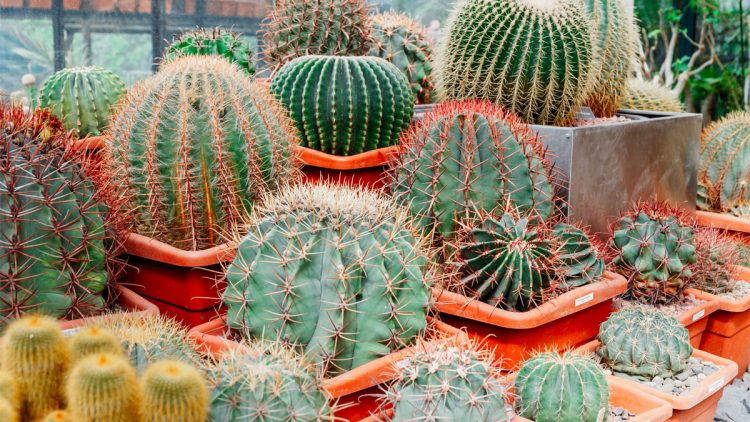Nurturing a Cactus in Arizona
GET A FREE ESTIMATE TODAY!
Growing a cactus in Arizona is relatively straightforward, given the state’s desert climate. Here are some tips to ensure your cactus thrives:
Choosing the Right Cactus
- Local Varieties: Opt for cacti native to the region, such as the Saguaro, Prickly Pear, or Barrel Cactus.
- Climate Adaptation: Select cacti that are well-suited to Arizona’s temperature extremes and arid conditions.
Planting
- Soil: Use well-draining soil, ideally a cactus mix or a combination of sand, perlite, and potting soil.
- Location: Choose a sunny spot, as most cacti require full sun to partial shade.
- Planting Time: The best time to plant cacti is during the warmer months, typically from spring to early fall.
Watering
- Frequency: Watering needs vary by species, but generally, cacti need watering every 2-3 weeks in the growing season and less during the winter.
- Method: Ensure the soil is completely dry before re-watering. Overwatering is the most common cause of cactus death.
Care and Maintenance
- Mulching: Use gravel or stones as mulch to retain moisture and control weeds.
- Fertilization: Feed your cactus with a balanced, water-soluble fertilizer during the growing season.
- Pruning: Remove dead or damaged parts of the cactus to prevent disease.
Protection
- Frost: While many cacti are frost-tolerant, protect them from severe frost by covering them or bringing potted cacti indoors.
- Pests: Watch for common pests like scale insects and spider mites. Use appropriate insecticidal soap if needed.
Transplanting
- Timing: Transplant cacti in late spring or early summer when they are actively growing.
- Procedure: Handle the cactus carefully to avoid damaging the roots and wear gloves to protect yourself from spines.
General Tips
- Containers: If planting in pots, ensure they have drainage holes to prevent waterlogging.
- Spacing: Provide enough space between cacti to allow for growth and air circulation.
By following these guidelines, you can successfully grow and maintain healthy cacti in Arizona’s desert environment.
How Much Water Does a Cactus Need?
The water needs of a cactus can vary depending on several factors, including the cactus species, the environmental conditions, and the time of year. Cacti are adapted to arid and semi-arid environments, so they generally require less water compared to many other plants. Here are some general guidelines for watering cacti:
- Well-Draining Soil: Cacti should be planted in well-draining soil to prevent water from pooling around the roots, which can lead to root rot. A cactus-specific potting mix or a mixture of sand and potting soil works well.
- Watering Frequency: The frequency of watering depends on the season and the specific needs of the cactus. Here are some general guidelines:
- Spring and Summer: During the growing season (spring and summer), cacti typically require more water. Water thoroughly when the top inch or two of the soil is dry. This may mean watering every 2-4 weeks, but it can vary depending on the species and the environment.
- Fall and Winter: In the dormant period (fall and winter), cacti need less water. Water sparingly, and allow the soil to dry out more between waterings. In some cases, you may not need to water at all during the winter months.
- Container Size: The size of the pot or container affects watering frequency. Larger pots hold more soil and retain moisture longer, so they may require less frequent watering than smaller pots.
- Climate and Humidity: The environmental conditions play a significant role in cactus watering needs. Cacti in hot, arid regions may need more frequent watering than those in cooler, more humid climates. Adjust your watering schedule to suit your local climate.
- Species-Specific Needs: Different cactus species have varying water requirements. Some are more drought-tolerant and can go longer between waterings, while others may need more consistent moisture.
- Rainwater vs. Tap Water: If possible, use rainwater or distilled water to water your cacti. Tap water can contain minerals and chemicals that may be harmful to cacti over time. If tap water is your only option, allow it to sit for 24 hours to let any chlorine or fluoride dissipate before using it on your cacti.
- Pot and Container Drainage: Ensure that the pot or container has adequate drainage holes to allow excess water to escape. This helps prevent waterlogged soil.
- Watering Technique: When you water, water the soil directly, avoiding wetting the cactus itself. Use a gentle stream of water and pour evenly around the pot until water starts to drain from the bottom.
- Observation: Regularly monitor your cacti for signs of overwatering or underwatering. Signs of overwatering may include soft or yellowing cactus, while signs of underwatering may include wrinkled or shriveled tissue.
Remember that it’s essential to tailor your watering schedule to the specific needs of your cactus and the local conditions. It’s better to underwater a cactus than to overwater it, as cacti are more resilient to drought than excess moisture. Over time, you’ll become familiar with the specific requirements of your cactus collection and can adjust your care routine accordingly.
What Is The Best Temperature To Grow A Cactus?
Cacti are adapted to various temperature ranges depending on their species and natural habitat. However, in general, cacti are well-suited for warm and arid or semi-arid climates. The best temperature range for growing cacti is typically between 70°F to 100°F (21°C to 37°C) during the day. Here are some key temperature considerations for growing cacti:
- Daytime Temperature: Most cacti thrive in warm to hot daytime temperatures. A daytime temperature range of 70°F to 100°F (21°C to 37°C) is ideal for growth and flowering. These temperatures mimic the conditions of their native desert and arid environments.
- Nighttime Temperature: Cacti often appreciate cooler nighttime temperatures, which can help them recover from the heat of the day and promote healthy growth. Nighttime temperatures in the range of 50°F to 70°F (10°C to 21°C) are generally well-tolerated by many cactus species.
- Seasonal Temperature Variations: Cacti often benefit from seasonal temperature variations, including cooler nights in the winter. This can help trigger bloom in some cactus species. In the winter, they can withstand cooler temperatures as low as 40°F (4°C) but should not be exposed to frost, which can damage or kill them.
- Winter Protection: If you are growing cacti in regions with cold winters, it’s essential to protect them from freezing temperatures. Most cacti are not cold-hardy and can be severely damaged or killed by frost. Overwinter them indoors or in a greenhouse to ensure their survival.
- Temperature Extremes: Cacti can tolerate high temperatures, but excessive heat can stress them. In hot climates, provide some shade during the hottest part of the day to prevent sunburn and dehydration. Protect them from extreme heatwaves or sun exposure during scorching summers.
- Temperature Fluctuations: While cacti are adapted to temperature fluctuations, rapid or extreme temperature changes can shock the plants. Gradual changes, such as transitioning them to cooler conditions in the fall or warmer conditions in the spring, are better for their overall health.
- Indoor Cultivation: If you are growing cacti indoors, maintain a consistent room temperature of around 70°F (21°C) during the day and slightly cooler at night, around 60°F to 70°F (15°C to 21°C). Providing plenty of bright, indirect sunlight is crucial for indoor cacti.
- Different Species, Different Needs: Keep in mind that there are thousands of cactus species, and their temperature preferences can vary. Some are more cold-tolerant, while others are adapted to extreme heat. Research the specific species you are growing to understand their temperature requirements.
In summary, cacti thrive in warm to hot temperatures during the day and appreciate cooler nights. While they are adapted to arid environments, providing some seasonal temperature variations and protection from extreme heat or cold is important for their overall health. Tailor your care to the specific needs of your cactus species and the local climate in which you are growing them.
To determine the exact cause of your cactus’s drooping, closely inspect the plant and its environment. Adjust your care routine accordingly, and in cases of severe damage or disease, consult with a knowledgeable gardener or plant professional for guidance on saving your cactus. Early detection and prompt action are often key to reviving a drooping cactus.
CACTUS CARE & REMOVAL SERVICES PHOENIX




